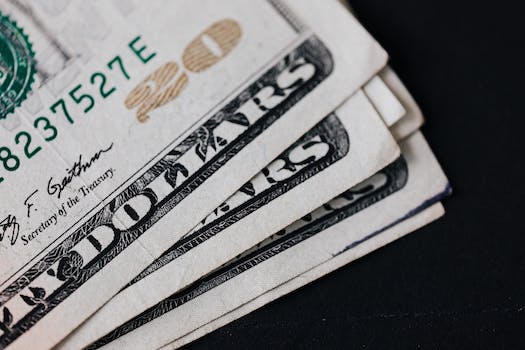

-
Table of Contents
Unraveling the Money Circuit Theory: Unveiling the Essence of Capitalism
Introduction
Understanding the Money Circuit Theory: Exploring the Concept of Capitalism
Capitalism is an economic system that has shaped the modern world. It is characterized by private ownership of the means of production, profit-driven markets, and the pursuit of individual self-interest. One theory that seeks to explain the workings of capitalism is the Money Circuit Theory. This theory examines the flow of money within the capitalist system, emphasizing the role of banks and financial institutions in creating and circulating money. By understanding the Money Circuit Theory, we can gain insights into the dynamics of capitalism and its impact on society.
The Role of Money in the Capitalist System
Understanding the Money Circuit Theory: Exploring the Concept of Capitalism
The Role of Money in the Capitalist System
Money plays a crucial role in the capitalist system, serving as the lifeblood that fuels economic activity and facilitates the exchange of goods and services. In this section, we will delve into the intricate relationship between money and capitalism, exploring how money circulates within the system and the implications it has for economic growth and development.
At its core, capitalism is an economic system characterized by private ownership of the means of production and the pursuit of profit. Money, as a medium of exchange, is essential for the smooth functioning of this system. It allows individuals and businesses to trade their goods and services, enabling specialization and the division of labor, which are key drivers of economic efficiency.
In a capitalist system, money circulates through various channels, forming what is known as the money circuit. This circuit consists of four main components: production, distribution, exchange, and consumption. Each component plays a vital role in the overall functioning of the capitalist system.
The first component, production, involves the creation of goods and services. Money is required to finance the production process, including the purchase of raw materials, machinery, and labor. Entrepreneurs invest their capital in the production of goods and services with the expectation of making a profit.
Once the goods and services are produced, they enter the distribution phase. This phase involves getting the products to the market and making them available to consumers. Money is again required to cover the costs associated with transportation, storage, and marketing. Distributors and retailers play a crucial role in this phase, as they facilitate the movement of goods from producers to consumers.
The exchange phase is where money truly comes into play. This phase involves the buying and selling of goods and services in exchange for money. Money acts as a medium of exchange, allowing individuals to trade their labor or products for a universally accepted form of payment. This exchange of money for goods and services is what drives economic activity and generates profit for businesses.
Finally, we come to the consumption phase, where individuals and households use their money to purchase goods and services for their personal needs and desires. Consumption is a fundamental component of the capitalist system, as it creates demand for goods and services, which in turn drives production and economic growth.
The money circuit theory emphasizes the importance of the continuous flow of money through these four components. Any disruption in this flow can have significant consequences for the overall functioning of the capitalist system. For example, if there is a shortage of money in the economy, businesses may struggle to finance their operations, leading to reduced production and economic stagnation.
On the other hand, an excessive influx of money can lead to inflation, eroding the purchasing power of individuals and causing economic instability. Therefore, maintaining a balance in the money supply is crucial for the stability and sustainability of the capitalist system.
In conclusion, money plays a vital role in the capitalist system, serving as the medium of exchange that facilitates economic activity. The money circuit theory provides a framework for understanding how money circulates within the system, from production to consumption. By recognizing the importance of this circulation and ensuring a balanced money supply, we can foster economic growth and development within the capitalist framework.
Understanding the Flow of Money in the Economy

Understanding the Money Circuit Theory: Exploring the Concept of Capitalism
Capitalism is an economic system that has shaped the modern world. It is based on the principles of private ownership, free markets, and the pursuit of profit. At the heart of capitalism lies the flow of money, which is essential for the functioning of the economy. To understand this flow, economists have developed various theories, one of which is the Money Circuit Theory.
The Money Circuit Theory, also known as the Monetary Circuit Theory, provides a framework for understanding how money circulates within an economy. It emphasizes the role of banks and financial institutions in creating and distributing money. According to this theory, money is not a static entity but a dynamic force that moves through the economy, enabling transactions and economic activity.
The flow of money in the economy begins with the creation of money by banks. When a bank grants a loan, it creates new money by simply crediting the borrower's account. This newly created money enters circulation and becomes part of the money supply. This process is known as endogenous money creation, as it is driven by the demand for credit rather than by the central bank's actions.
Once in circulation, money flows through various channels, facilitating transactions between individuals, businesses, and governments. For example, when a consumer purchases a product, money flows from the consumer to the business. The business then uses this money to pay its employees, suppliers, and other expenses. This flow continues as the employees and suppliers use the money they receive to make their own purchases, creating a chain of transactions.
The Money Circuit Theory also highlights the role of financial markets in the flow of money. Financial markets provide a platform for buying and selling financial assets such as stocks, bonds, and derivatives. These transactions involve the exchange of money, which contributes to the circulation of money in the economy. Moreover, financial markets enable investors to allocate their capital to different sectors, influencing the direction of economic activity.
In addition to the flow of money within the economy, the Money Circuit Theory also considers the role of the state and its monetary policy. Central banks play a crucial role in managing the money supply and interest rates, which affect the cost of borrowing and the overall level of economic activity. By adjusting these variables, central banks can influence the flow of money and steer the economy towards desired outcomes, such as price stability and full employment.
Understanding the flow of money in the economy is essential for policymakers, economists, and individuals alike. It helps us comprehend the mechanisms that drive economic growth, inflation, and financial stability. By studying the Money Circuit Theory, we gain insights into the complex interactions between banks, financial markets, and the state, which shape the functioning of capitalist economies.
In conclusion, the Money Circuit Theory provides a valuable framework for understanding the flow of money in the economy. It emphasizes the dynamic nature of money and its role in facilitating transactions and economic activity. By studying this theory, we can gain a deeper understanding of the mechanisms that drive capitalism and shape our modern world.
Analyzing the Impact of Money Circulation on Economic Growth
Understanding the Money Circuit Theory: Exploring the Concept of Capitalism
Analyzing the Impact of Money Circulation on Economic Growth
Capitalism, as an economic system, is driven by the circulation of money. The concept of money circulation is at the core of capitalism, and understanding its impact on economic growth is crucial. In this article, we will delve into the money circuit theory and explore how it influences the overall health of an economy.
The money circuit theory, developed by economist John Maynard Keynes, posits that the circulation of money is essential for economic growth. According to this theory, money flows through various sectors of the economy, creating a cycle of income and expenditure. This circulation of money stimulates demand, which in turn drives production and employment.
At the heart of the money circuit theory is the idea that spending is the primary driver of economic activity. When individuals and businesses spend money, it creates a ripple effect throughout the economy. For example, when a consumer purchases a product, the money flows to the producer, who then uses it to pay their employees and suppliers. These employees and suppliers, in turn, spend the money they receive, creating a continuous cycle of spending and income generation.
The circulation of money is not limited to just consumer spending. Investment also plays a crucial role in the money circuit. When businesses invest in new equipment, research and development, or expansion, it creates a multiplier effect. This multiplier effect occurs when the initial investment leads to increased production, employment, and income, which then stimulates further spending and investment.
The impact of money circulation on economic growth can be seen in various ways. Firstly, it leads to increased consumption. As money circulates through the economy, individuals have more income to spend on goods and services. This increased consumption drives demand, which encourages businesses to produce more, leading to economic growth.
Secondly, money circulation stimulates investment. When businesses see increased demand for their products or services, they are more likely to invest in expanding their operations. This investment creates jobs, increases productivity, and ultimately contributes to economic growth.
Furthermore, money circulation also has a positive effect on government revenue. As the economy grows, tax revenues increase, providing governments with more resources to invest in public goods and services. This, in turn, further stimulates economic growth.
However, it is important to note that the money circuit theory also has its limitations. In times of economic downturns, such as recessions or depressions, the circulation of money can slow down significantly. This can lead to a decrease in consumption, investment, and overall economic activity. In such situations, governments often intervene through fiscal and monetary policies to stimulate the circulation of money and jumpstart economic growth.
In conclusion, the money circuit theory provides valuable insights into the functioning of capitalism and its impact on economic growth. The circulation of money, driven by spending and investment, creates a cycle of income and expenditure that stimulates demand, production, and employment. Understanding the importance of money circulation is crucial for policymakers and economists alike, as it helps guide decisions that can promote sustainable economic growth.
Q&A
1. What is the Money Circuit Theory?
The Money Circuit Theory is an economic concept that analyzes the flow of money within a capitalist system, emphasizing the role of banks and financial institutions in creating and controlling money.
2. How does the Money Circuit Theory explain capitalism?
According to the Money Circuit Theory, capitalism is driven by the constant circulation of money. It suggests that banks and financial institutions play a crucial role in creating money through lending, which stimulates economic activity and generates profits.
3. What are the key components of the Money Circuit Theory?
The key components of the Money Circuit Theory include the creation of money by banks through lending, the circulation of money through various economic activities, and the concentration of wealth and power in the hands of financial institutions and capitalists.
Conclusion
In conclusion, understanding the Money Circuit Theory provides insights into the concept of capitalism. This theory emphasizes the flow of money within an economy, highlighting the interdependence between different economic agents. By examining the circuit of money, from production to consumption and back to production, we can gain a deeper understanding of how capitalism operates and the role of various actors within the system. This perspective allows for a comprehensive analysis of the dynamics and mechanisms that drive capitalist economies.












